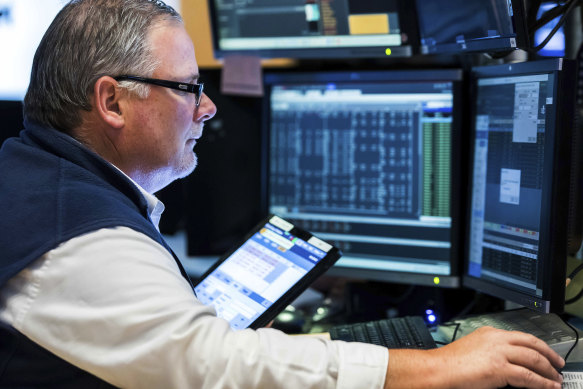ASX lifts as traders await US inflation data
By Millie Muroi
The Australian sharemarket continued to climb on Thursday, lifted by healthcare and materials companies amid increasing optimism about the global economy.
The S&P/ASX 200 gained 44.5 points, or 0.6 per cent, to 7,239.8 at the market open, slightly below expectations from ASX futures which were pointing to a bounce of 1.5 per cent at 7.38am this morning.

All sectors, except utilities, were in the green, led by health care which was up 1.2 per cent. Top lifters included Core Lithium (up 3 per cent) and lithium chemicals company Allkem (up 2.5 per cent), while giants like BHP saw its shares also up 0.95 per cent.
Technology company Xero recovered some of its losses from Wednesday, adding 1.8 per cent, while coal companies New Hope Corporation and Yancoal shed 4 and 3 per cent.
US stocks closed higher this morning as investors made their final moves ahead of a highly anticipated report on inflation, one that could show whether Wall Street’s rising optimism recently has been warranted or overdone.
The Dow Jones Industrial Average rose 268.9 points, or 0.8 per cent, to 33,973, the S&P 500 gained 50.4 points, or 1.3 per cent, to 3,969.6 and the Nasdaq Composite added 189 points, or 1.7 per cent, to 10,931.7.
Stocks have started 2023 with gains on hopes that cooling inflation and a slowing economy may get the Federal Reserve to ease off its sharp hikes to interest rates. Such increases can help stamp out high inflation, but they also slow the economy by design and raise the risk of a recession while hurting prices for stocks and other investments.
Economists expect Thursday’s report to show inflation is continuing to cool from its summertime peak, down to 6.5 per cent last month from 7.1 per cent in November and from more than 9 per cent in June. The hope on Wall Street is that such a trend toward normal could convince the Fed to soon halt its blistering set of rate increases, many of which were at shock-and-awe levels that were triple the usual amount.
Some investors are even betting the Fed will cut interest rates in the second half of this year, to help prop up an economy that’s beginning to show pockets of weakness because of last year’s rate hikes. Cuts to rates typically act like steroids for markets, propping up prices for stocks and other investments.
“One real thing I think underpinning the market is simply the fact that the market doesn’t believe the Fed when they say they’re going to keep hiking this year,” said Brad McMillan, chief investment officer for Commonwealth Financial Network.
Of course, that also means investors could be setting themselves up for disappointment. If Thursday’s data and other reports don’t show inflation is improving as much as expected, it could mean the Fed would have to get tougher on interest rates.
The Fed has already been saying repeatedly that it plans to raise its key overnight interest rate a bit further, past its current perch sitting in a range of 4.25 per cent to 4.50 per cent. That rate began last year at its record low of virtually zero.
The central bank has also insisted it plans to keep rates high for a while to ensure inflation is really beaten down. It does not envision any rate cuts happening this year, and it’s even said that any “unwarranted” rallies on Wall Street “driven by a misperception” would only make the mission of returning inflation to normal more complicated.
Recently, though, Wall Street has been looking through such pronouncements.
If the economy does fall into a modest recession, possible rate cuts could help to support stocks. And hope is growing among investors that the economy could successfully walk the tightrope of slowing enough to snuff out high inflation but not so much as to cause a deep recession.
Later this week, companies will also begin reporting how much profit they made during the last three months of 2022. That’s key because earnings are one of the main levers that set stock prices, and the reports will also offer a window into how companies are managing the squeeze of inflation.
With AP
Most Viewed in Business
Source: Thanks smh.com